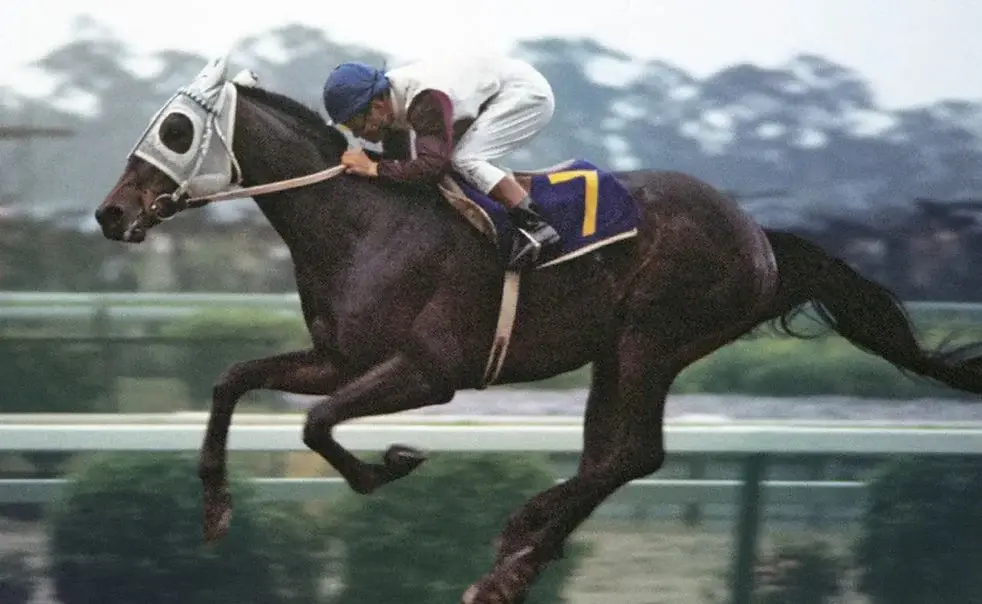The Horse That Haiseiko Redefined Japan’s Racing Scene

Elle
Oct 30th 2025
Likes
Share:
If we think about sporting legends, some names immediately come to our mind like Haiseiko, a legendary thoroughbred, who transformed Japanese horse racing into a national passion through skill and spirit. Babe Ruth is the one for baseball, Wayne Gretzky for hockey, and Haiseiko for Japanese horse racing. However, one difference that is there between the athlete that shaped the sports and the horse is that which decided the fate of the racetrack and went beyond the racetrack, Haiseiko was not a human but an animal, whose amazing story eventually changed the way co Japan looked at racing as a sport and entertainment.
Haiseiko was not only a champion; he was a national sensation. Haiseiko, a product of 1970, was brought up at the Urakawa Stallion Station in Hokkaido. In comparison with other thoroughbreds of his era, he was quite average. His blazing spirit, unmatched speed, and his fighting to the very end nature, however, distinguished him already in his initial races. Saito Masazo, the trainer, on the other hand, was quick to realize that the young horse was full of racing determination. It was this blend of Haiseiko’s natural ability and his almost brutal fight for victory that made the horse a legend.
Haiseiko started his career in local races under the National Association of Racing (NAR), where he managed to win 18 consecutive races. Such a command of the local tracks earned him a lot of coverage by the media, and sports fans who had never been interested in horse racing were suddenly captivated. People went to the race tracks in bigger numbers, newspapers devoted more of their sports pages to the results of his races, and Haiseiko was recognized by everyone even before he made an appearance in the highest-level racing circuit in Japan.
His rise marked a turning point for the sport. Before Haiseiko, Japanese horse racing was often seen as a pastime for gamblers rather than a sport for fans. His charisma and consistent success gave people a reason to cheer for a horse the same way they cheered for baseball or sumo stars. When he transitioned from regional to central racing under the Japan Racing Association (JRA) in 1973, anticipation across the nation was immense.
Once he went under the Japan Racing Association, Haiseiko met more challenging competition, however, he didn’t take long to show his value. His battles against rivals like Take Hope and Triple Crown winner St Lite were unforgettable, which was the main reason why the tracks were filled with people breaking the attendance records. All his races were like a big deal in the whole country and they were shown on TV which made him a sports celebrity.
Haiseiko is remembered for a multitude of moments in his career, however, the 1974 Tenno Sho (Spring) stands out especially, where he was third but gained a lot of respect because of his indomitable spirit. Followers of the sport could hardly take their eyes off the struggle and bravery of the bronze medalist against the mightiest four-legged competitors in Japan, even though he was defeated. His rivalry with Take Hope in particular became the stuff of legend, marking a golden age for horse racing in the country.
During his career, he had a really long shot moment at the 1974 Tenno Sho (Spring) when he was able to only finish third but got the most respect from his fighting spirit. Even though he lost, the fans were totally blown away by his battle and bravery against the top horses in Japan. Exactly, his rivalry with Take Hope the awesome thing that the characters of a story were going to be made, the brilliant era of Japanese horse racing was indelibly marked.
Whin Haiseiko was not just for wins and titles; his popularity went far beyond that. He stood for endurance, toughness, and fighting spirit. At a time when Japan was still developing socially and economically, Haiseiko’s narrative was like a bright light to people, a great example that could be made from any race, not only those who were of top-quality or from well-off backgrounds. His coming from the lower side of the race was a way to identify with him, and his being able to perform gave the people a reason to have faith.
Haiseiko retired in 1975 after a career that included 22 wins out of 29 races. His retirement ceremony drew tens of thousands of fans, many of whom came simply to say thank you. The affection people felt for him was rare for any animal in sports history. He spent his later years as a stud, contributing to the next generation of thoroughbreds, though none ever matched his cultural impact.
After Haiseiko died in 2000 at the age of 30, people everywhere in Japan paid their respects to him. Statues were built to commemorate him, films documented his life, and his name is still, even now, mentioned with respect by the people who are into horse racing. He is still the only one of few animals whose name has gone beyond the sport and has been recognized by the whole nation.
Haiseiko’s influence went beyond his records or trophies. He made Japanese horse racing one of the most popular sports and created a legion of new fans and breeders. His life was a great way to take the word back to the people that outstanding achievements are not only hereditary, that they are made of heart, grit, and the desire to triumph.
More than two decades after his passing, Haiseiko’s spirit endures in Japanese racing. With every new horse that becomes famous, people start comparing the new horse to “The Monster” again.
He is still the yardstick, the animal that revolutionized the way Japan viewed the sport, an immortal whose influence is still very much alive.
